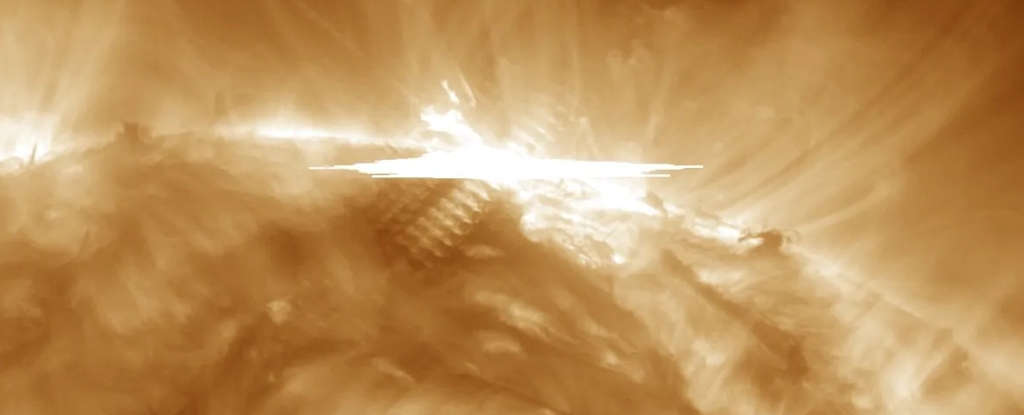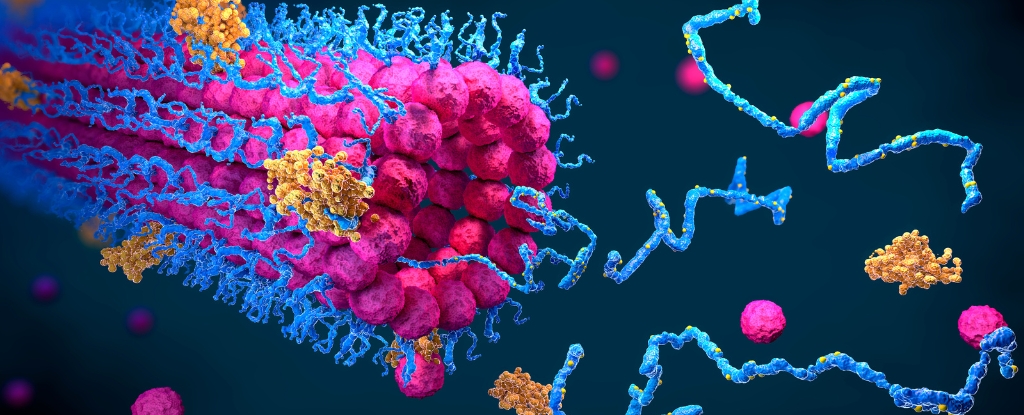Place your adverts here on InfoDig @ low rates; banner ads, sponsored links and guest articles etc. Contact us
Our little piece of the Universe is contained within a vast shell of dark matter.
Though the space between the few isolated stars scattered throughout this largely invisible sphere seems empty, there's a lot going on out there in the wilds of the Milky Way.
By studying hot gas glowing in circumgalactic space, astrophysicists have found evidence of enormous magnetic fields that wind through and around our galaxy's dark matter 'halo'.
"This work provides the first detailed measurements of the magnetic fields in the Milky Way's X-ray emitting halo and uncovers new connections between star-forming activities and galactic outflows," explains astrophysicist He-Shou Zhang of the National Institute for Astrophysics (INAF) in Italy.
"Our findings show that the magnetic ridges we observed are not just coincidental structures but are closely related to the star-forming regions in our galaxy."
The study was performed on the X-ray light emitted by two huge structures that extend above and below the plane of the Milky Way. Discovered in 2020, these 'eROSITA bubbles' extend more than 45,000 light-years either side of the galactic center. They're powered by huge outflows of gas and plasma; shocks in this medium cause the bubbles to glow brightly in the X-ray range.
When the bubbles were discovered, scientists thought there were two main contenders for a source.
One was activity from the supermassive black hole at the center of the Milky Way. If it went through a period of jet activity, the heat and energy created could have blown the bubbles.
The second explanation was starburst activity. The galaxy is pretty quiet now, but it could have undergone a period of intense star formation. That, too, could have produced enough heat and energy to create the eROSITA bubbles expanding into the galactic halo.
Zhang and his colleagues thought that any magnetic fields, if they were present, may have some answers.
Light, when it travels through a magnetic field, becomes oriented according to the direction of the magnetic field in what's referred to as polarization. We can examine the light collected by our telescopes to see not just evidence of its polarization, but the direction of the magnetic field that produced it.
When the researchers studied the polarization of the broad spectrum of light emitted by the eROSITA bubbles, they found huge, long filaments of magnetization. If we could see these filaments with our eyes, they would stretch across the sky up to 150 times longer than the width of a full Moon, the researchers say.
And the filaments suggest that the origin of the eROSITA bubbles was star formation. At a distance between around 10,000 and 16,000 light-years from the galactic center, a ring of star formation could have produced the heat and winds that caused hot gas and plasma to billow out into the galactic halo over a distance of tens of thousands of light-years and counting.
"It is now well known that a small fraction of 'active' galaxies can generate outflows of matter fueled by accretion onto supermassive black holes or by intense star formation events, which profoundly affect their host galaxy. Such outflows are thought to be fundamental elements in regulating the growth of galaxies and the black holes at their centers," explains astrophysicist Gabriele Ponti of INAF.
"What I find fascinating in this case is to note that even the Milky Way, a quiescent galaxy like many others, can expel powerful outflows, and in particular that the star formation ring at the end of the rotational center contributes significantly to the galactic outflow. Perhaps the Milky Way is revealing to us a phenomenon common in galaxies similar to ours, thus helping us to shed light on the growth and evolution of these objects."
It is not a certainty, of course; it's going to take a lot more analysis to make a solid determination on the source of the bubbles. The team's findings are consistent with recent simulations, but more detailed ones will be needed to determine whether star formation can produce the kinds of outflows we observe in the eROSITA bubbles.
But the magnetic fields represent a significant piece of the puzzle.
"The study opens new frontiers in our understanding of the galactic halo," Zhang says, "and will contribute to deepening our knowledge of the complex and dynamic star-forming ecosystem of the Milky Way."
The research has been published in Nature Astronomy.















 English (US) ·
English (US) ·